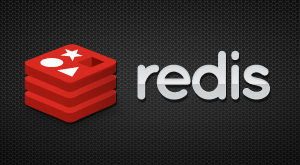
Redis Labs Boosts Data Visualization, Cluster Recovery

Building and running Redis databases is about to get easier thanks to a pair of enhancements coming out of Redis Labs this week, including the new RedisInsight client interface that lets users visualize Redis data, as well as automated cluster recovery capabilities when running the database on Kubernetes.
Released 10 years ago as a fast key-value store, Redis has blossomed into a versatile NoSQL database that can morph into a variety of configurations to handle different workloads, including being a document store, a graph database, a time-series database, and a search engine. It’s currently the eight most popular database according to DB-Engines.com, ahead of Cassandra and behind MongoDB and Elasticsearch.
The company behind the open source software, Redis Labs, drives much of the development of the database. Earlier this year, the company acquired a product called RDBTools from HashedIn. The new RedisInsight GUI is based on that RDBTools offering.
RedisInsight provides a “single pane of glass” where developers and administrators can get a bird’s eye view of what’s going on with their Redis database, including open source Redis, Redis Enterprise, or third-party Redis environments, like AWS’ ElastiCache, according to Redis Labs. Specifically, the product lets users explore and interact with Redis data, “including complex Redis data structures and modules such as Redis Streams, RediSearch, RedisJSON, RedisTimeSeries, and RedisGraph.”
In addition to viewing the data structures, RedisInsight lets users perform bulk management operations and execute traditional operations on the data, using either a command line interface or using the GUI’s “command builders.” The software helps users reduce memory usage and optimize their data structures and applications according to customized recommendations generated by Redis Labs.
The new software, which is free and runs on Windows, MacOS, and Ubuntu Linux, will be a boon to users, says James Curtis, a senior industry analyst with 451 Research who covers data, AI, and analytics.
“In general, it’s a good move for Redis Labs and that’s because it can be considered a type of friction reducer,” Curtis tells Datanami via email. “Anytime a vendor can reduce what might be a manual activity that is a good thing.
Redis Insight is due to become more popular with users, as RDBTools “likely lived in obscurity” before, Curtis says. “Redis Labs is enhancing, integrating it with its enterprise modules, and opening it up to a larger audience,” he says.
Redis Labs also added new automated cluster recovery capabilities to the Kubernetes Operator, which exists in the enterprise version of the database that it sells. This feature will help organizations feel confident in the operations of large Redis deployments, it says.
“Cluster recovery is critical not only in the case of quorum loss—when more than half of a Redis Enterprise cluster nodes are lost—but also in the general operation of Redis Enterprise to support the recreation of an existing cluster in a new region or data center,” the company says.
The new feature will also assist customers by enabling them to “apply the principles of chaos engineering” to their to your Redis Enterprise Kubernetes Clusters without worrying about data loss and extended downtime.
Curtis says many database vendors are releasing Kubernetes operators, which provide good frameworks for handling persistence. “Kubernetes is functioning as a type of rising tide for databases and so all databases to some extent [are] getting lift from Kubernetes,” the analyst says.
Related Items:
Redis Speeds Towards a Multi-Model Future
Redis Connector Aims to Boost Spark Performance
































